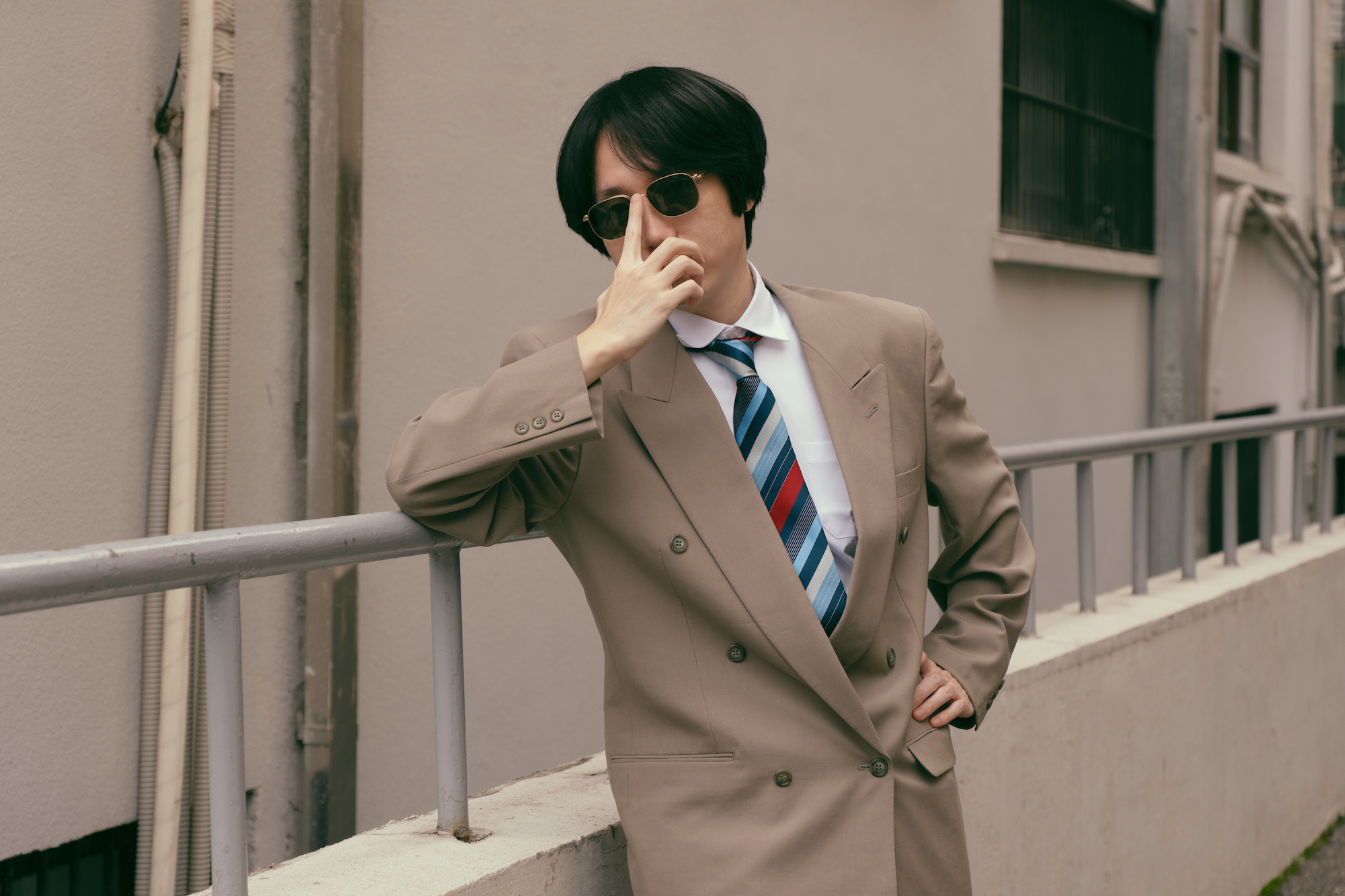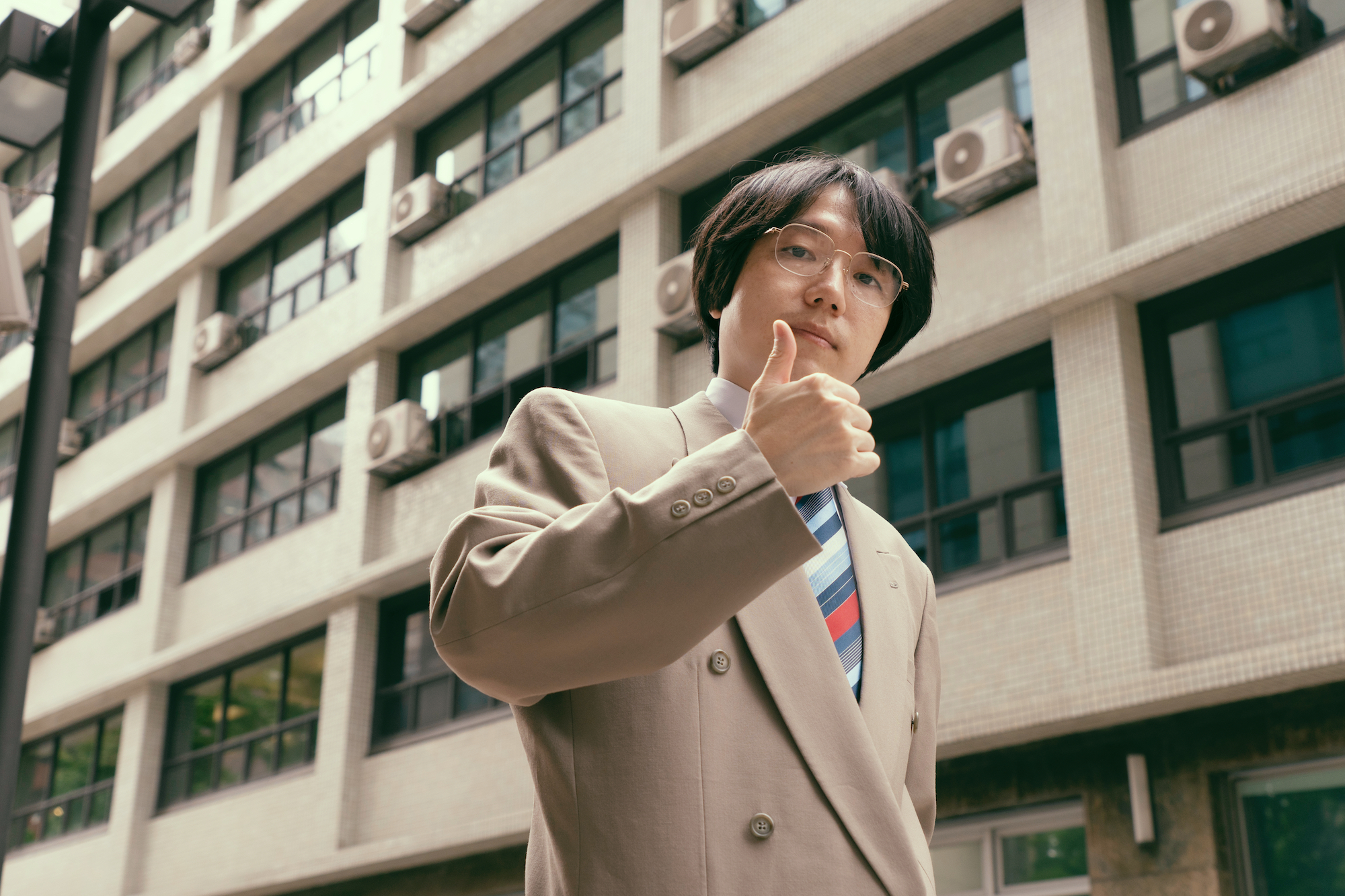How did Tokyo culture shine from the 80s to 90s? And why is it garnering attention once again beyond Japan?
Night Tempo, a Korean producer/DJ based in Japan and the U.S., and Maki Nomiya, the original godmother and queen of Shibuya-kei, explore such questions in this interview.
In the second part of the interview, the pair talks about the song “Tokyo Rouge” featuring Maki Nomiya from Night Tempo’s new album Ladies In The City, the process of making the remix of “The Night Is Still Young (feat. Night Tempo),” and their thoughts on Tokyo post-2020s.
The portrayal of a woman living in the city during the 90s in “Tokyo Rouge”
–Night Tempo-san, what made you want to work with Maki Nomiya-san?
Night Tempo: The era of the 80s to the 90s is the theme behind my album Ladies In The City, and I consider Maki Nomiya as the “prime minister” of stylish music of that time. The universe of this album wouldn’t be coherent without her. Upon making this album, I thought of approaching Nomiya-san first.
–How did you begin working on “Tokyo Rouge feat. Maki Nomiya,” the song you two collaborated on?
Night Tempo: After finding out that I could work with Nomiya-san, I made this song because it was an opportunity I couldn’t miss. I had wasted many things in my life until that point because I held back, so now I give my opinion directly when I want to do something. I started writing the song when I wasn’t sure about it, but I planned to stick with it even if she didn’t accept my offer.
–The lyrics were written by you, Nomiya-san. What kind of back-and-forth did you have with him?
Maki Nomiya (Nomiya): The instrumentals already included sound effects like the hustle and bustle of the city, car horns, and phones. It already had a world of its own. We first met each other virtually, and I asked Night Tempo about the lyrics he wanted me to write. He wanted me to portray a woman living in the city during the 90s. From there, I developed my vision for the song.
–The lyrics are very visual. Was that a deliberate choice?
Nomiya: Yes. Also, I wanted to give it a 90s kayokyoku feel, so I left some corny parts in the lyrics. It depicts a woman who waits, a trope that’s been passed down from generation to generation in Japanese enka. It might be rare today. Back then, cell phones weren’t commonplace; only landlines were available. So, I imagined and wrote about a woman waiting in a hotel room or her room. The woman in “The Night Is Still Young” goes out to meet a man saying, “Hayaku anata ni aitai” (I want to meet you now), but in “Tokyo Rouge,” the woman waits and waits for his call.
I also envisioned Rachel from Ridley Scott’s Blade Runner a little bit. She’s a replicant but keeps waiting for Deckard, the protagonist played by Harrison Ford. The film’s from 1982, and the story took place in LA in 2019, so we’ve surpassed the future depicted in it. Night Tempo’s music is retro but has a futuristic, cyber feel, so I had that in mind a bit too. In the music video, I channel Rachel’s style and play a woman who keeps changing her clothes because she gets tired of waiting (laughs).
–Did the title of the song come from you, Nomiya-san?
Nomiya: Yes. I wanted to include the word Tokyo because the image of Pizzicato Five is precisely that, and also because lipstick is like an amulet that women wear when we have to make a decision. Also, red lipstick symbolizes determination and femininity. These are the things I took into account for the title.
–Night Tempo-san, how did you feel when you received the lyrics?
Night Tempo: I had an inkling Nomiya-san had a similar sensibility from talking to her at our meeting, but when I saw the lyrics, I was convinced. It’s easier to work and communicate with people who have a similar sensibility. I think our personalities and point of view are alike, so I was elated to see that the lyrics reflected the vision I had in mind.
Night Tempo’s reimagining of “The Night Is Still Young”
–As part of your 40th-anniversary project, Nomiya-san, Night Tempo-san remixed “The Night Is Still Young.” How did this come about?
Nomiya: This is the 40th anniversary of my debut, and I wanted to do a “World Tour Mix” as one of the projects to commemorate that. It’s hard to go abroad now because of covid, but we can go anywhere through music and be with people from any country. I wanted artists from across the globe to recreate and rearrange songs that represent Pizzicato Five and me so that people could enjoy music like we were on a world tour. I felt that Night Tempo had so much love and respect for 80s and 90s Japanese music, so I asked him to create a fusion of kayokyoku-ish sounds and western sounds. I’ll be digitally releasing more “World Tour Mix” songs with artists from other countries, so keep an eye out for that too.
–Night Tempo-san, what did you think when she approached you about this?
Night Tempo: I used to listen to “The Night Is Still Young” a lot as a reference. When she first spoke to me about the project, I said, “If possible, I’d like to work on ‘The Night Is Still Young.’” It was great to recreate a song that I used to refer to as a reference. Many remixes of Shibuya-kei songs have a style that’s quite different from the original, but I felt like there was no need to change this song that much. I recreated it as a new, honest Shibuya-kei song. It has a 90s house music sound. I used piano house, a subgenre of Shibuya-kei, as a base to recreate the song smoothly.
–Nomiya-san, what was your impression when you heard the final product?
Nomiya: I strongly associated Night Tempo with this Showa groove sound, so I thought the rearrangement would be more in-your-face, but it turned out to be a track with a very chic and cool groove. I think he made a 2022 version of “The Night Is Still Young.” Did you have any sources you pulled from for the rearrangement?
Night Tempo: I based it on “The Night Is Still Young” and added my signature sound a bit. My style of music doesn’t explode in a hype way. I often write songs that carry the same vibe from the intro. This song is like that, and it ends in a big way. The goal was to make it sound current while keeping the original sound in the back of my mind.
Tokyo from Night Tempo and Maki Nomiya’s perspective
–Lastly, what is your impression of Tokyo in the 2020s?
Night Tempo: There are so many different scenes, so much so that it feels like we’re in the Sengoku period. It’d be great if people in similar circles could work together and respect each other’s culture, but it seems like there’s some division, and people insult one another. Part of that derives from the atmosphere of society. Unfortunately, the people that stand out are those trying to create friction. I want to be part of the Japanese market, but I don’t want to belong to one small scene.
Nomiya: Tokyo today doesn’t have the same vitality as it did in the 80s and 90s because of covid. But that doesn’t mean I want to go back to the way things were. Now is the time to think about different issues like the environment and human rights, not the time to be frivolous. Music isn’t as bright and joyful as Shibuya-kei in the 90s, and there isn’t much of the 80s kayokyoku vibe that Night Tempo is unearthing. I think that’s why Shibuya-kei is being appreciated again, and there’s a demand for music remixed by Night Tempo. Ladies In The City is a really solid album, as it shows his love and respect for each woman artist he featured. I was happy to be part of it, and I’m excited for him to continue sharing the greatness of Japanese music with the world.
Night Tempo
Night Tempo’s a future funk Korean producer/DJ who reconstructs Japanese city pop from the 80s, Showa-era kayokyoku, and Japanese disco. He’s based in the U.S. and Japan. After rearranging Mariya Takeuchi’s “Plastic Love,” Night Tempo caused an online City Pop craze in the west. He’s also a Showa-era cassette tape collector with a deep admiration for Toshiki Kadomatsu and Daft Punk. In 2019, Night Tempo started his Showa Groove series, a project where he modernizes famous songs from the Showa era. He’s released 12 titles, starting with Wink, to Anri, 1986 Omega Tribe, BaBe, Yuki Saito, Shizuka Kudo, Miki Matsubara, Miho Nakayama, Kaoru Akimoto, Momoko Kikuchi, Junko Yagami, and Kyoko Koizumi. In May 2021, Night Tempo released a compilation album, Showa Idol’s Groove, focusing on Showa-era idols. His original albums are Moonrise (2018), Night Tempo (2019), Funk To The Future (2020), and Concentration (2021). Further, Night Tempo released his first album on a major label titled Ladies In The City in 2021. He played at Fuji Rock Festival in 2019 and toured in six Japanese cities in the fall of the same year.
http://nighttempo.com
Maki Nomiya
Maki Nomiya’s a musician born in 1960. She made her debut in 1981 with “Pink no Kokoro.” After forming Portable Rock in 1982, she joined Pizzicato Five in 1990. As the godmother and queen of Shibuya-kei, Nomiya instigated an international Shibuya-kei movement. Since then, she’s been working worldwide as a music and fashion icon. Nomiya’s currently active as a solo artist, as seen in her music project, Miss Maki Nomiya Sings Shibuya-kei Standards, in which she sings famous Shibuya-kei and Shibuya-kei adjacent songs. 2021 was her 40th anniversary as a singer, and she’s been working in a wide array of fields such as music, fashion, health and beauty production, and essay-writing.
http://missmakinomiya.com
Translation Lena Grace Suda





